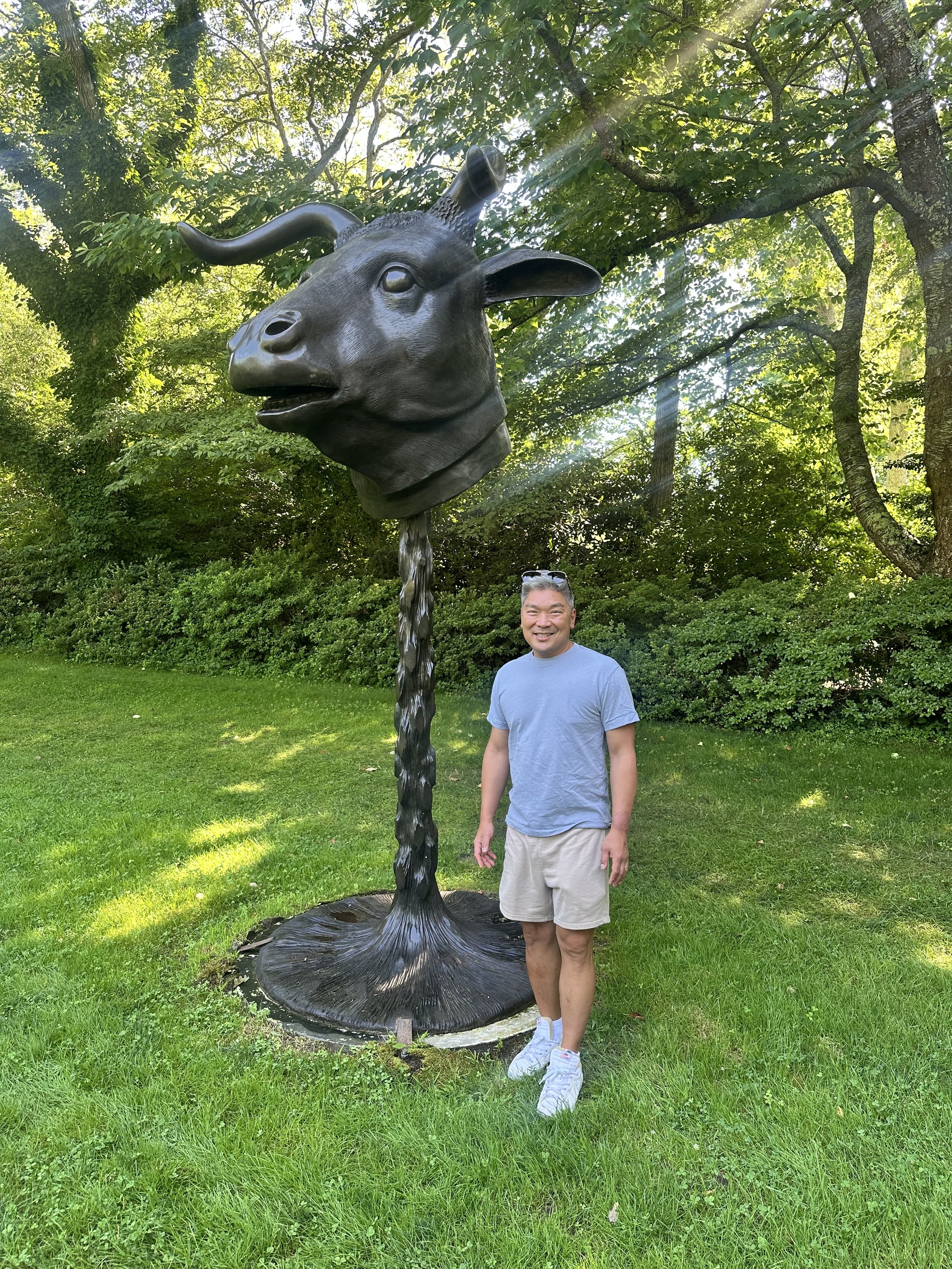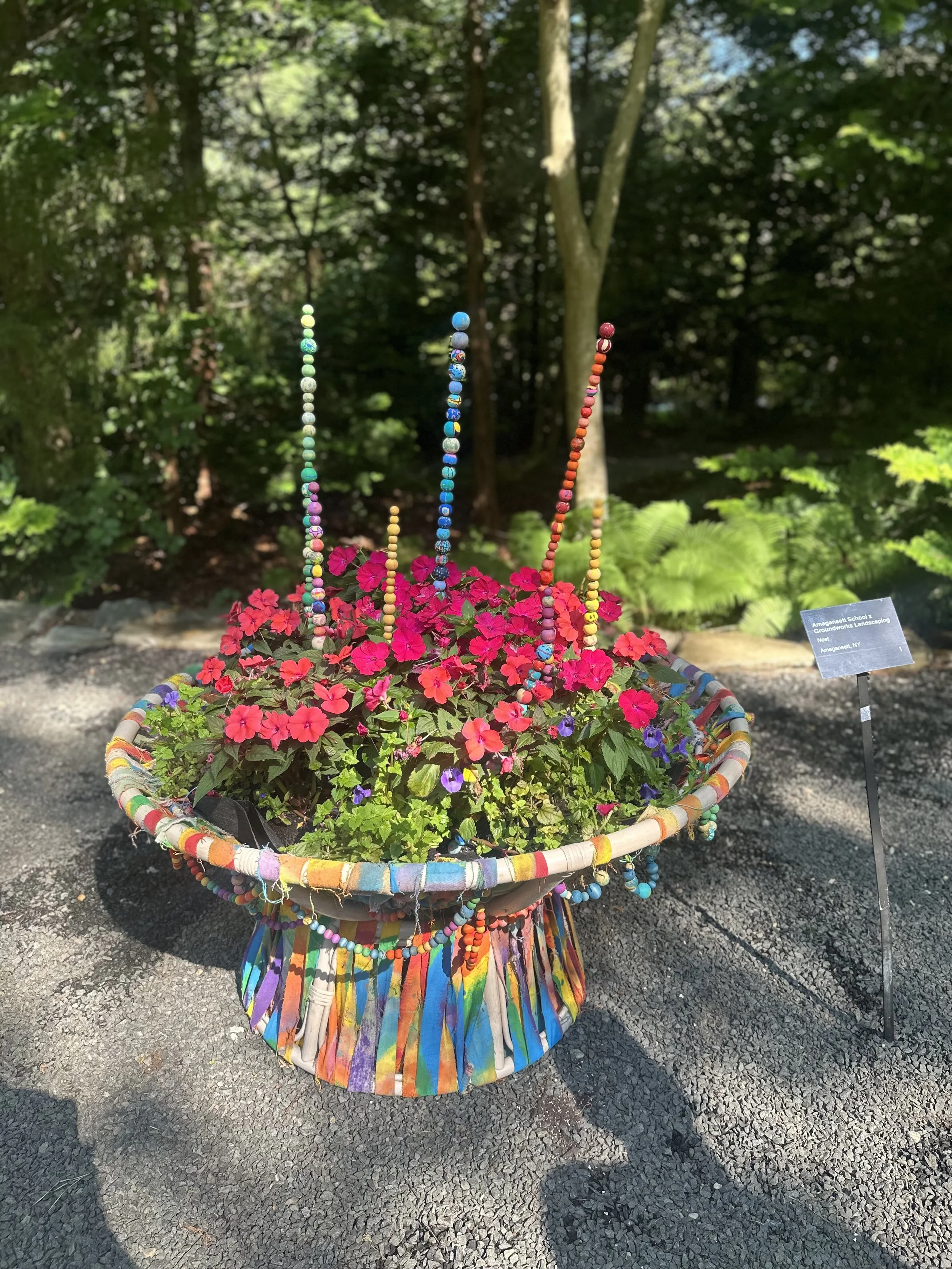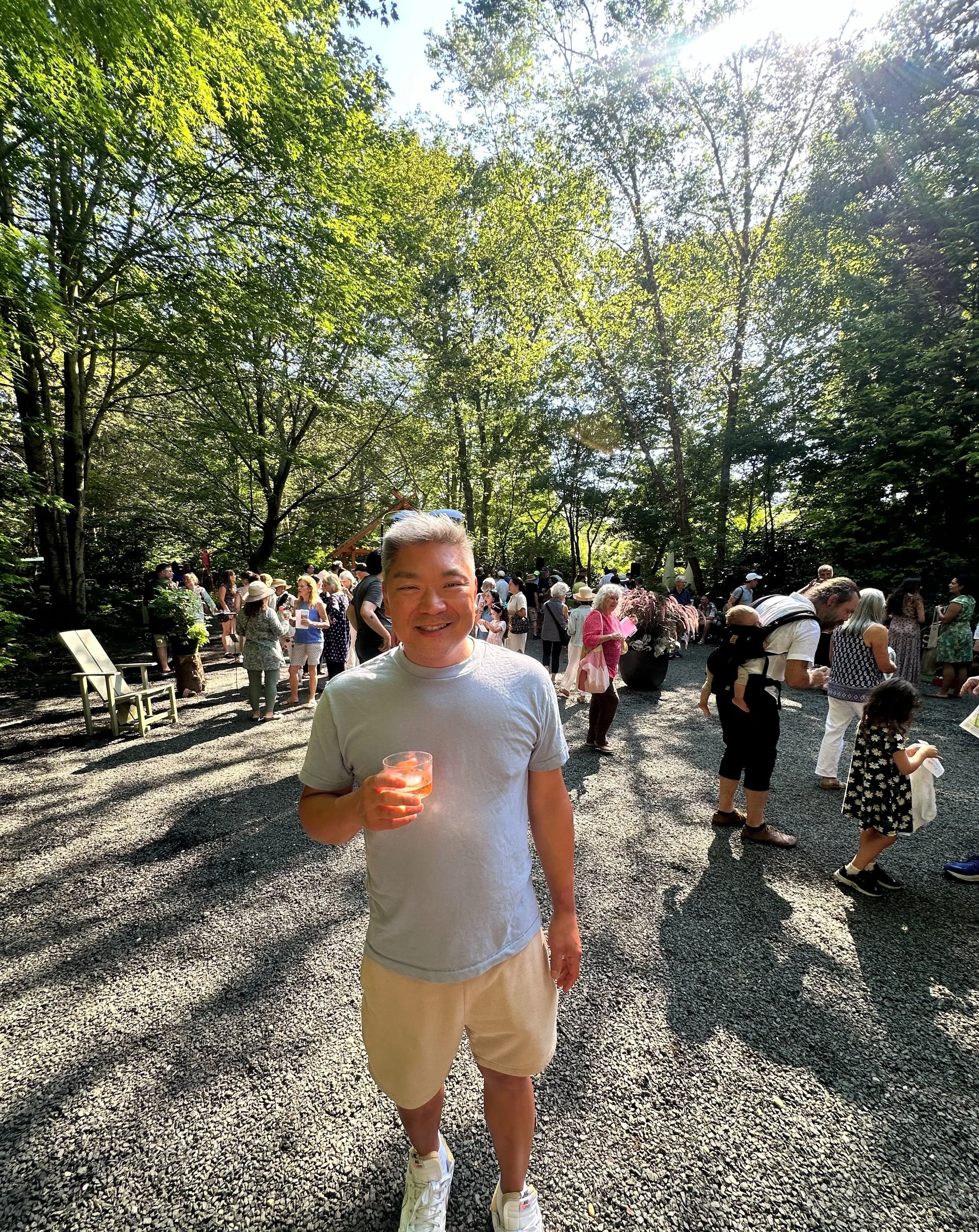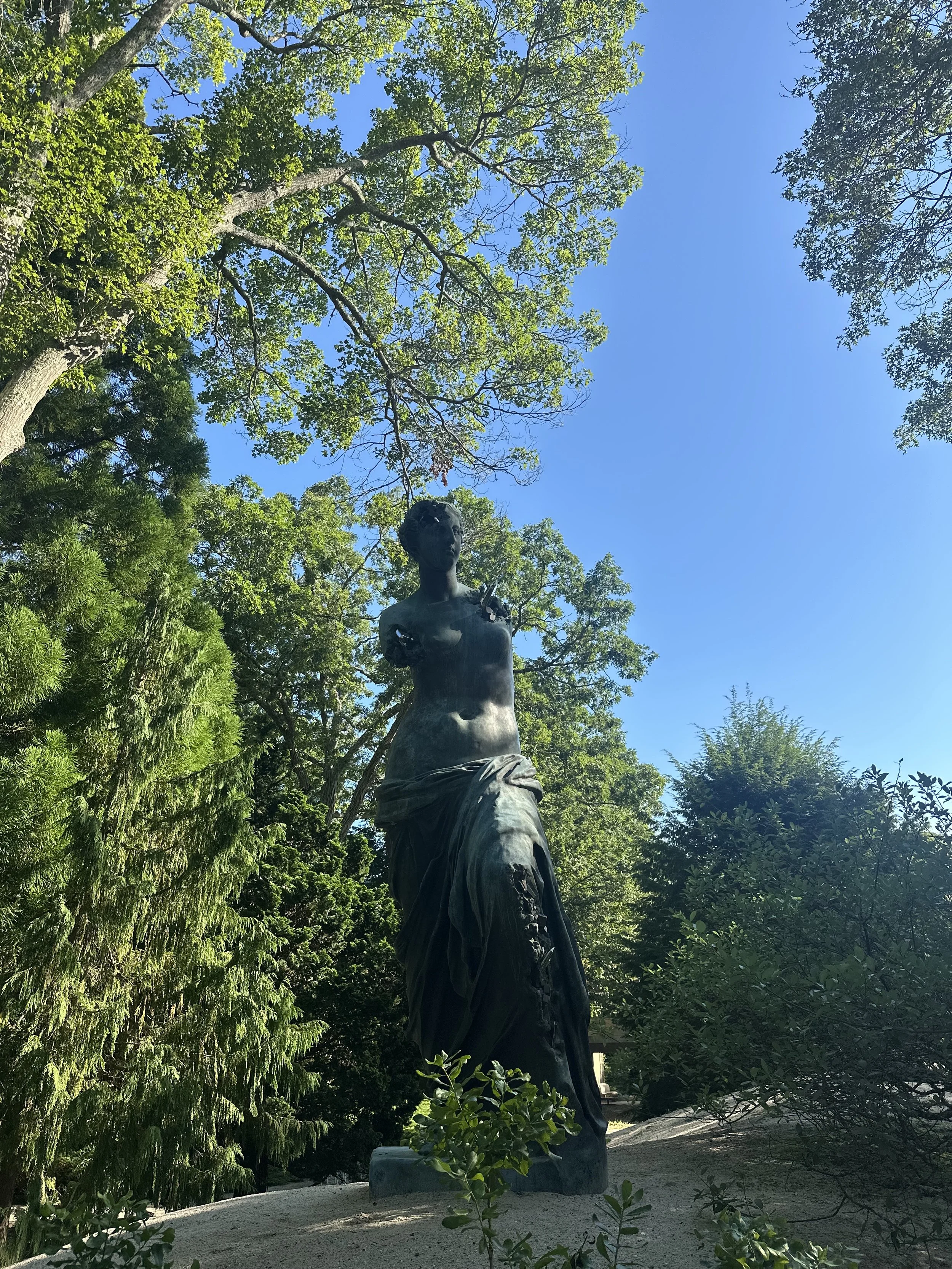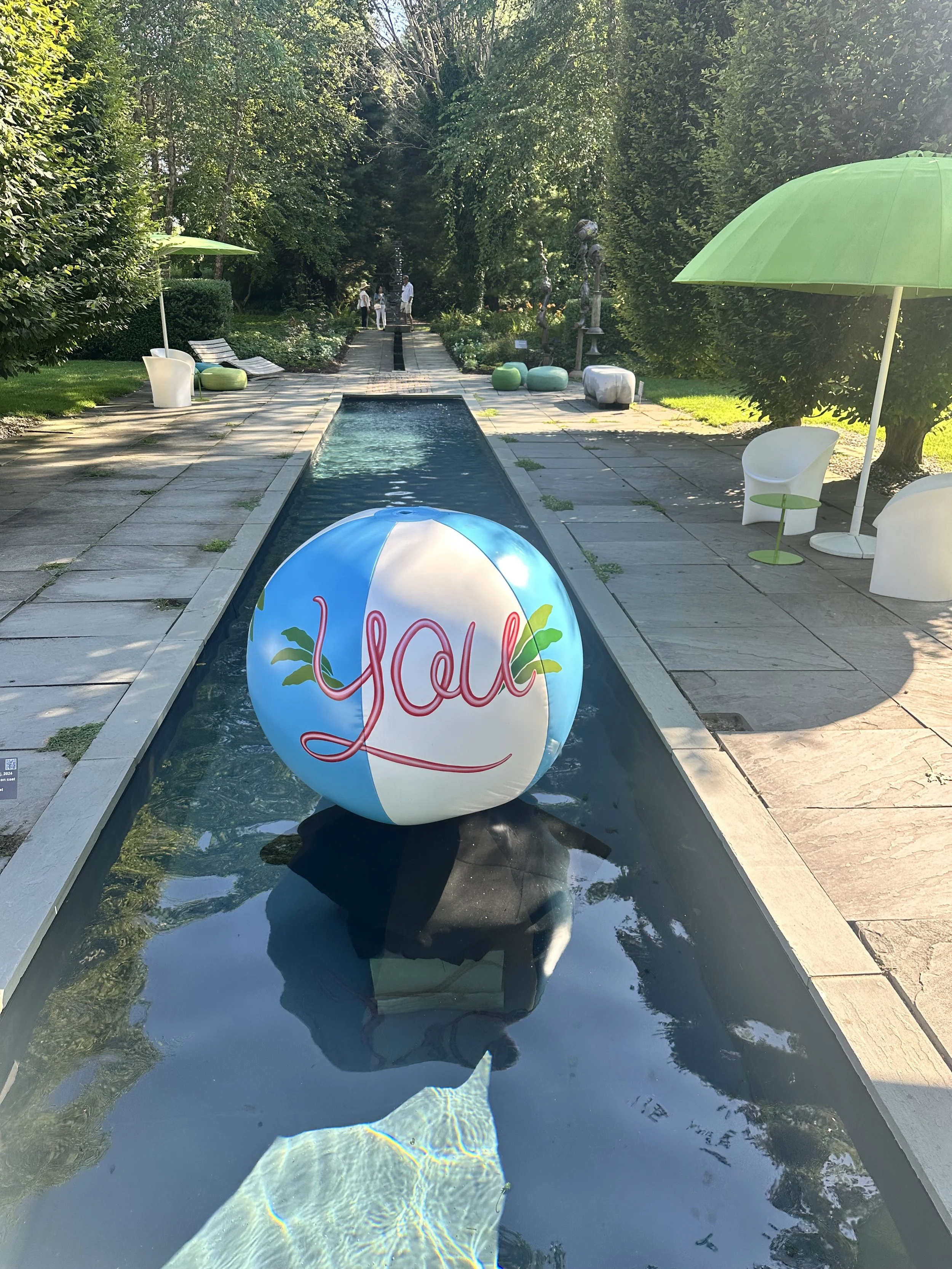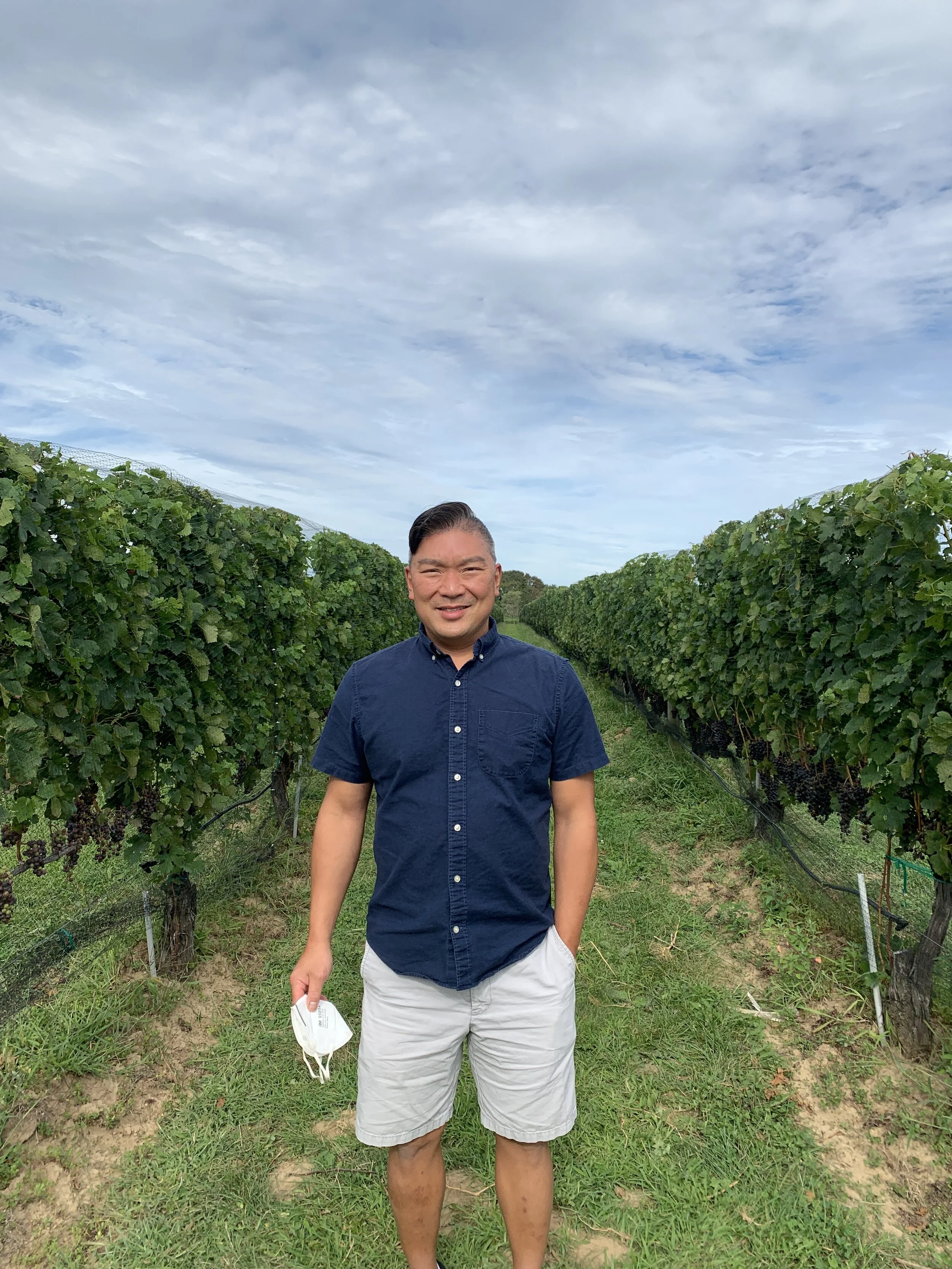Hamptons Guide: LongHouse Reserve
Address | 133 Hands Creek Rd, East Hampton, NY 11937
Amid the cedar groves and lush greenery of East Hampton, LongHouse Reserve offers a serene yet stimulating retreat from the usual summer crowds of the Hamptons. Founded by Jack Lenor Larsen, the celebrated textile designer, collector, and artist, LongHouse Reserve was envisioned as more than just a garden or a gallery — it is a living embodiment of how art, nature, and design can harmoniously co-exist. Larsen’s belief that the appreciation of art and nature enriches everyday life is palpable in every carefully considered planting, every turn of the path, and every sculpture that rises from the earth with striking purpose.
When we visited, the gardens were humming with life, creativity, and conversation. The Planters ON+OFF the Ground XII exhibition was on view, an annual celebration that invites artists, designers, and gardeners alike to reimagine what a planter can be — a functional object elevated to the realm of fine art, a commentary on our relationship with nature, or a whimsical, sculptural statement. As we wandered through the grounds, it was a delight to observe these creative interpretations tucked into the garden’s many nooks and open lawns. Some were playful, others serene, many unexpectedly thought-provoking. What made this exhibition even more enjoyable was the interactive element: guests were invited to cast a vote for their favorite piece, fostering a sense of participation and connection between visitors and artists. Strolling with a glass of crisp rosé in hand, we happily debated our choices, making our way between installations and allowing ourselves to be surprised at every turn.
LongHouse Reserve’s 16 acres unfold with the deliberate rhythm of a symphony, from formal gardens to woodland paths, each area revealing itself like a new movement in Larsen’s vision. The gardens are themselves masterworks — not merely backdrops for the art, but active participants in the experience of it. Meticulously curated plantings bloom in harmony with monumental sculptures, reflecting both seasonal change and the timeless conversation between humanity and nature. In this way, LongHouse does what few places manage so successfully: it blurs the boundaries between landscape, art, and architecture, creating a total environment where all three inform and elevate each other.
Of course, no visit would be complete without seeking out some of the most iconic and celebrated works within the collection. Among them, Daniel Arsham’s Eroded Venus de Milo was a standout. Arsham’s work speaks to the passing of time, decay, and our shifting cultural memory. His reinterpretation of the classical Venus — eroded, fragmented, but still unmistakably powerful — seemed perfectly situated within the verdant calm of LongHouse’s grounds. Here, the tension between ruin and beauty, permanence and impermanence, felt especially resonant. The sculpture invited contemplation not only of its own form but of the transitory nature of everything around it — the falling petals, the shifting clouds, even the slow, steady wear of time upon ourselves.
Another unforgettable moment was standing before Ai Weiwei’s Circle of Animals/Zodiac Heads, a series of bronze sculptures representing the twelve signs of the Chinese zodiac. Originally conceived as a commentary on cultural heritage and restitution, Ai Weiwei’s work is imbued with layers of meaning, touching upon history, politics, and identity. At LongHouse, these commanding animal heads felt both grounded and transcendent, echoing the natural rhythms of the surrounding landscape while asserting their own mythic presence. Each head — from the fierce tiger to the contemplative rabbit — seemed to invite visitors into a dialogue: What does it mean to belong to a certain time, a certain place, a certain story? How do we carry our histories forward? These questions lingered long after we moved on.
Throughout the day, moments of quiet reflection alternated with bursts of conversation and discovery. One of the great joys of LongHouse Reserve is its capacity to encourage both solitude and community. Around one corner, a solitary figure might be lost in thought before a sculpture, sketching or reading beneath a tree. Around another, small groups gathered, glasses of wine in hand, animatedly discussing their favorite planter or marveling at the scale of a particular installation. The Reserve invites these layers of engagement, from the deeply personal to the cheerfully social.
Wine in the garden felt especially appropriate — a small luxury that mirrored Larsen’s own ethos of living artfully and well. Sipping and strolling, we felt part of a tradition that celebrates beauty not as something separate from daily life, but as its animating force. This sense of integration — between people and place, art and nature, the cultivated and the wild — permeates LongHouse. It is a place that refuses to segregate creativity into galleries or studios; instead, it insists that art belongs among the trees, beneath the sky, in the rhythm of our footsteps and the spaces between conversations.
Even beyond the sculptures and exhibitions, the grounds themselves are worth lingering over. The dunes, the pond gardens, the ornamental grasses swaying in soft breezes — each area reflects Larsen’s global influences and his passion for gardens as living works of art. The Japanese-inspired raked gravel gardens, the espaliered trees, the bold modernist plantings: together, they create an environment that feels timeless yet alive, curated yet organic. There’s a rhythm here, a sense of procession and pause, of discovery and return. It’s easy to imagine Larsen himself walking these paths, tweaking a detail here, repositioning a stone there, always refining his vision of harmony between the human hand and the natural world.
Visiting LongHouse Reserve is not merely a matter of seeing art or gardens — it’s an immersion into a philosophy of living that celebrates creativity, contemplation, and connection. Whether voting on a playful planter, contemplating the eroded elegance of Venus, or pondering the cyclical nature of time beneath the stern gaze of a bronze ox, one leaves LongHouse with a sense of replenishment. It reminds us that art and nature are not luxuries or escapes, but essentials — forces that shape how we see, how we live, how we imagine the possible.
As we made our way back through the gates and into the wider world of East Hampton’s busy summer streets, we carried with us not just the memory of sculptures and gardens, but a quieter, deeper resonance: the possibility of artfully lived days, of beauty pursued not as an end, but as a daily practice. LongHouse Reserve, in this way, is not simply a place to visit — it is a place that lingers with you, a quiet teacher reminding us all to look more closely, to move more slowly, and to live with intention.
For those who seek inspiration, reflection, or simply an afternoon of beauty and good company, LongHouse Reserve offers all this and more — a testament to one man’s vision, and an invitation to make that vision our own.
Tips for Visiting LongHouse Reserve
Check the Calendar: Review the LongHouse Reserve website for current exhibitions, special events, and hours. Exhibitions like Planters ON+OFF the Ground are seasonal and worth planning around.
Wear Comfortable Shoes: The grounds are extensive, with gravel paths, lawns, and wooded trails. Plan for a leisurely walk.
Bring Sun Protection: Hats, sunglasses, and sunscreen are helpful as much of the garden is open to the sun.
Take Your Time: Plan to spend at least 1.5 to 2 hours to fully enjoy the grounds, art installations, and gardens without rushing.
Participate in Interactive Exhibits: If visiting during exhibitions like ON+OFF the Ground, enjoy voting for your favorite piece — it’s part of the fun.
Enjoy a Glass of Wine: LongHouse often offers wine during special events or exhibition days, adding to the relaxed atmosphere.
Bring a Notebook or Sketchpad: The gardens and art installations provide wonderful inspiration for writing, sketching, or simply collecting thoughts.
Photography is Welcome (Respectfully): Visitors are encouraged to photograph the art and gardens, but remember to be mindful of other guests.
Explore the Full Grounds: Don’t miss highlights like Ai Weiwei’s Circle of Animals / Zodiac Heads, Daniel Arsham’s Eroded Venus de Milo, and the tranquil pond and dune gardens.
Visit the Gift Shop: The small but well-curated shop offers unique art books, design objects, and garden gifts reflective of LongHouse’s ethos.
Check for Guided Tours: Docent-led tours provide deeper insight into the art, gardens, and the history of Jack Lenor Larsen’s vision.
Respect the Environment: Stay on paths, don’t touch the sculptures, and help preserve the peaceful atmosphere for all visitors.
Bring a Friend or Go Solo: LongHouse is equally wonderful for quiet solo contemplation or lively conversations with a companion.
Leave Pets at Home: Pets aren’t permitted, so plan accordingly.
Pack Light: A small bag is best; large backpacks aren’t necessary



